The Middle East is a region rich in history, culture, and, notably, its bread. Bread is more than just food here; it’s a symbol of hospitality, tradition, and community. In Middle Eastern cuisine, bread is often the centerpiece of a meal, and each type tells a story of the region’s diverse cultures. Let’s explore some of the most iconic breads of the Middle East.
Pita: The Versatile Pocket Bread
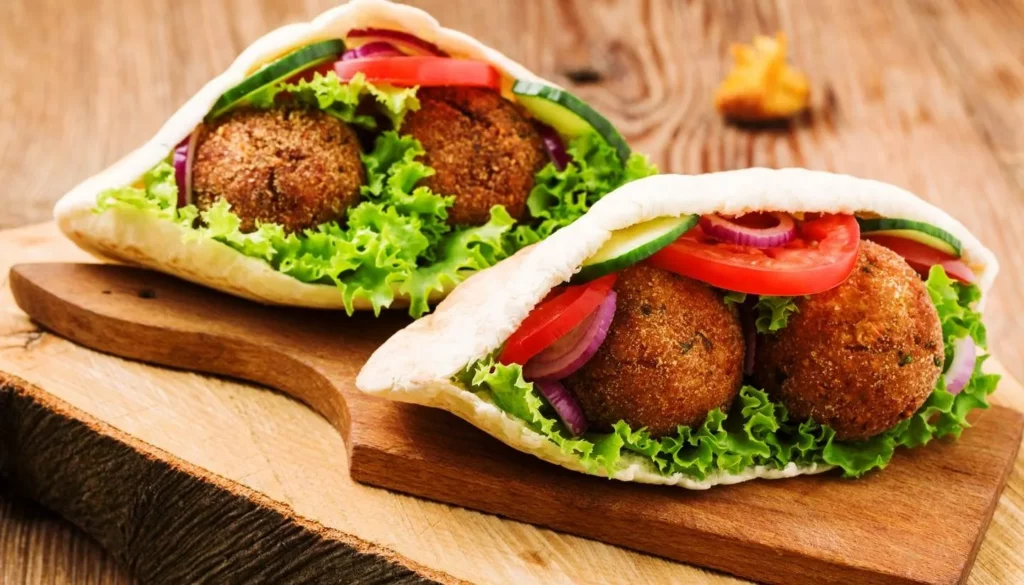
Pita, also known as khubz in Arabic, is one of the most recognizable Middle Eastern breads. This round, soft bread with a pocket in the center is perfect for stuffing with falafel, shawarma, or fresh vegetables. In countries like Lebanon and Jordan, pita is also used as a scoop for dips like hummus and baba ghanoush. The simplicity of pita allows it to complement a wide range of dishes, making it a staple in many Middle Eastern homes.
In Lebanon, a typical breakfast might include warm pita with labneh (a tangy yogurt cheese) drizzled with olive oil and sprinkled with za’atar.
Lavash: The Thin, Flexible Bread
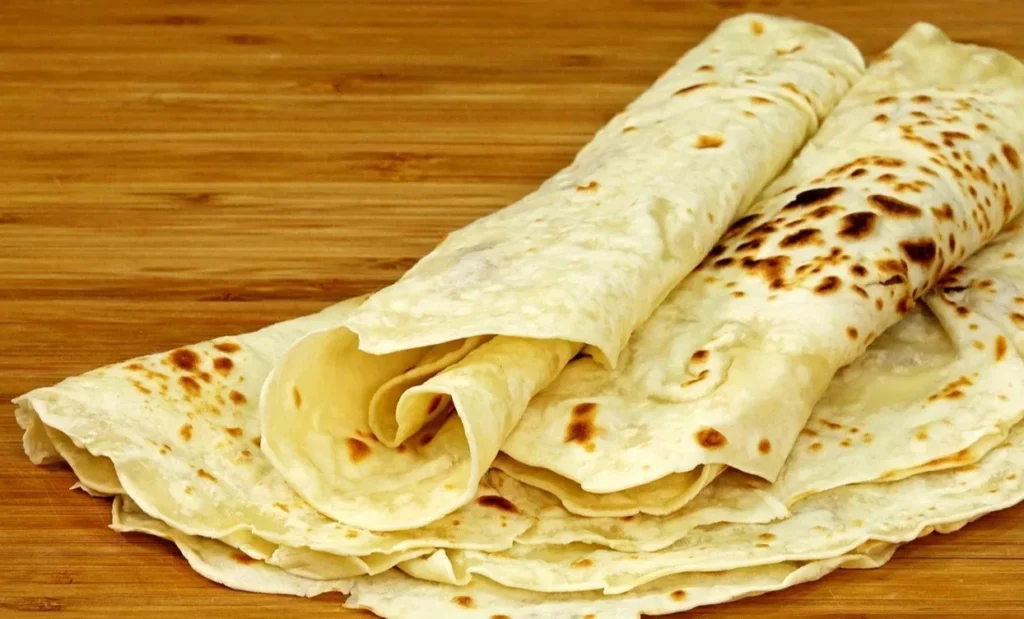
Lavash is a traditional flatbread that originated in Armenia but is widely enjoyed across the Middle East. This bread is thin and soft when fresh, making it ideal for wrapping meats, cheeses, and vegetables. When it dries, it becomes crisp and is often used as a cracker. Lavash is particularly popular in Iran, Turkey, and the Caucasus region. The preparation of lavash is often a communal activity, with large sheets of dough being baked on the walls of a clay oven.
In Iran, lavash is often served with kebabs or as part of a mezze platter, alongside fresh herbs, cheese, and walnuts.
Manakish: The Topped Flatbread
Manakish is a type of Middle Eastern flatbread similar to pizza, typically topped with a mixture of za’atar (a blend of thyme, sesame seeds, and sumac), olive oil, cheese, or ground meat. Popular in Lebanon, Syria, and Palestine, manakish is often eaten for breakfast or as a snack. The bread is baked until it’s golden and slightly crispy, with the toppings giving it a burst of flavor. It’s a comforting and satisfying dish that’s perfect for sharing.
Example: 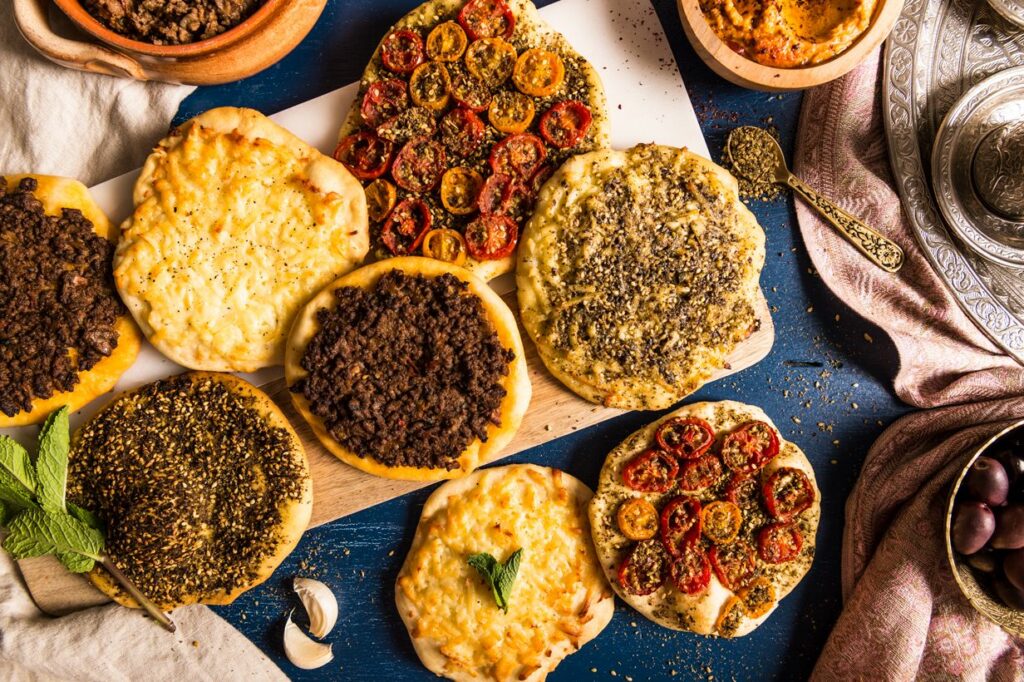 In Beirut, you can find manakish vendors on almost every corner, offering this delicious bread topped with za’atar or akkawi cheese (a salty white cheese).
In Beirut, you can find manakish vendors on almost every corner, offering this delicious bread topped with za’atar or akkawi cheese (a salty white cheese).
Taboon: The Ancient Bread
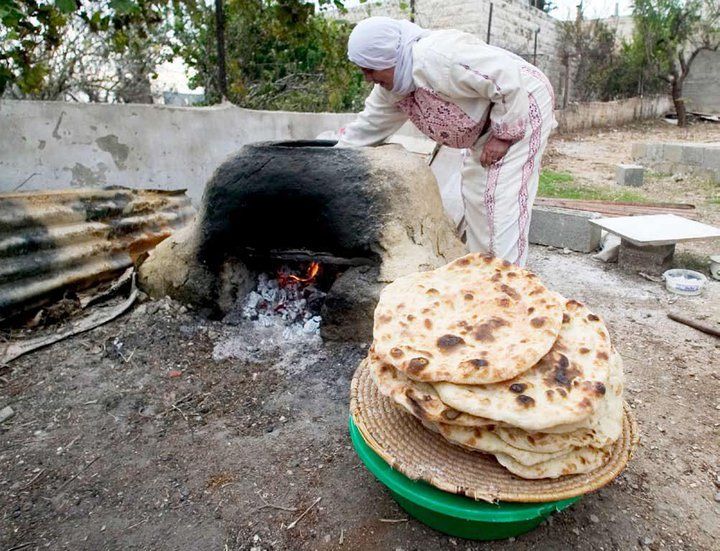
Taboon bread, baked on the hot stones of a taboon oven, has ancient roots in the Middle East. This slightly chewy, round bread is often used as a base for musakhan, a traditional Palestinian dish of chicken, onions, and spices. Taboon is thicker than pita but still soft enough to wrap around food. Its smoky flavor, imparted by the baking process, makes it a favorite in Palestinian cuisine.
In the West Bank, musakhan is traditionally served on a large piece of taboon bread, soaked in olive oil and sumac.
Markook: The Paper-Thin Bread
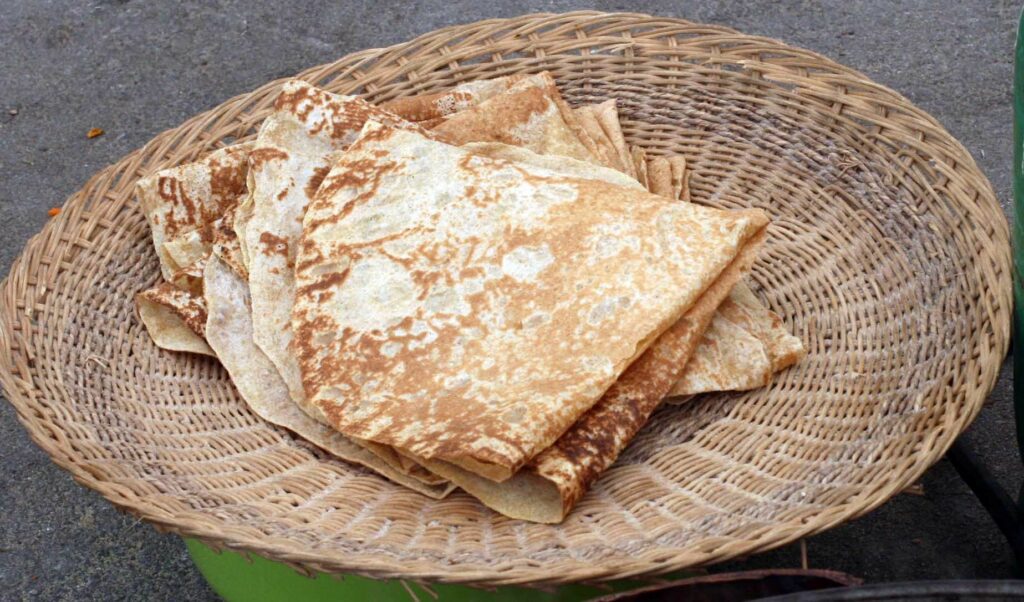
Markook, also known as saj bread, is a large, thin flatbread baked on a convex metal griddle called a saj. This bread is so thin that it can almost be seen through, making it incredibly light and delicate. Markook is often used to wrap foods like shawarma or eaten with dips. It’s particularly popular in Lebanon and Syria, where it’s made fresh daily in markets and homes.
In Syria, markook is commonly paired with labneh and olives for a light and simple meal.
